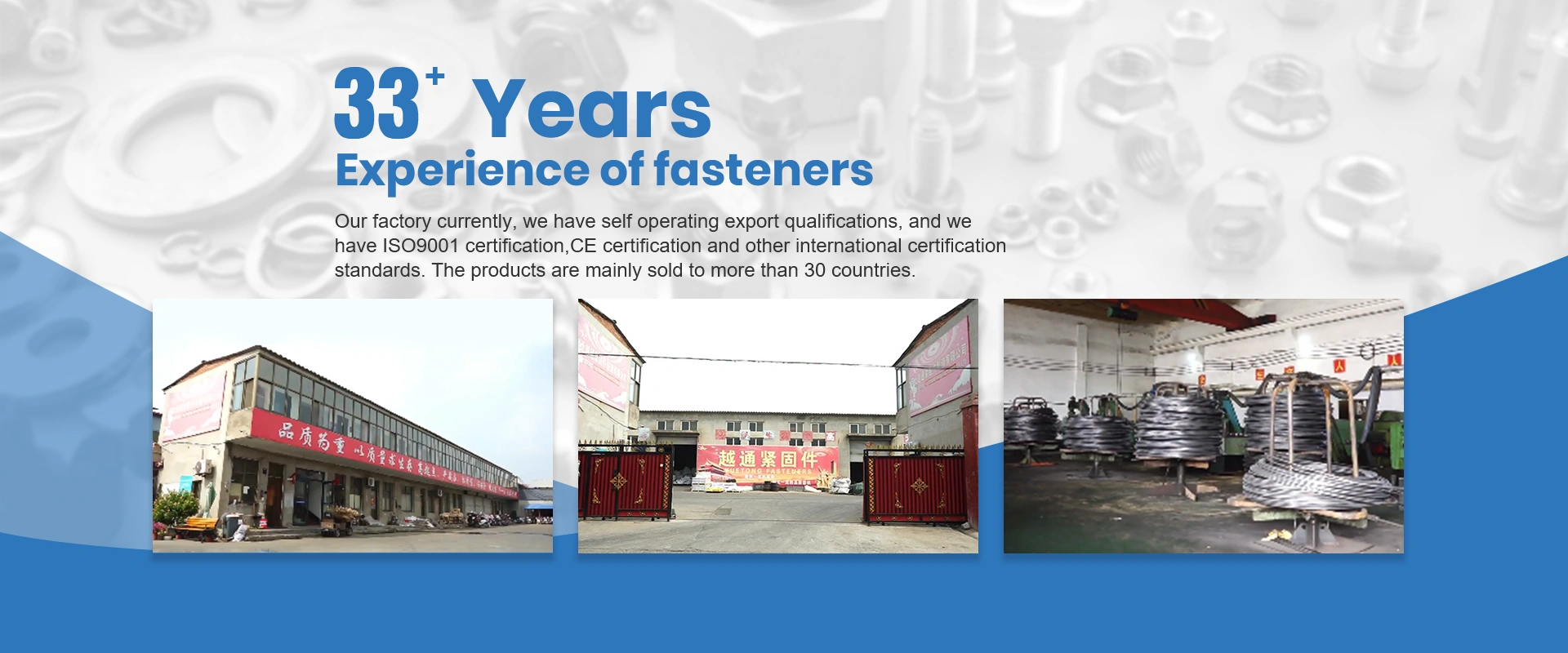Déc . 05, 2024 19:02 Back to list
Understanding the Impact of Metric Lag Screws on Structural Performance and Stability
Understanding Metric Lag Screws A Comprehensive Overview
Lag screws, also known as lag bolts, are heavy-duty fasteners specifically designed for heavy load applications. When it comes to construction and woodworking, they provide the necessary strength and durability required for structural integrity. This article focuses on the different metrics of lag screws, particularly the concept of metric sizes, and their significance in various applications.
What are Metric Lag Screws?
Metric lag screws are simply lag screws that are measured using the metric system. Unlike their imperial counterparts, which are sized in inches, metric lag screws are measured in millimeters. This difference in measurement is significant, especially when dealing with international standards, as the metric system is widely used around the globe. Lag screws typically consist of a large, coarse thread which allows them to grip the material tightly, providing a secure fastening even in the most demanding environments.
Key Features of Metric Lag Screws
1. Strength and Durability Metric lag screws are constructed from high-quality steel, providing exceptional strength. They are often coated with materials such as zinc or galvanized finishes to enhance corrosion resistance, making them ideal for both indoor and outdoor applications.
2. Variety of Sizes Metric lag screws come in a variety of sizes, typically ranging from M6 to M20 in diameter. The size determines the length and the type of application they are suitable for. For instance, a larger screw will be required for heavy beams or a structural application, while smaller screws might suffice for fastening thinner materials.
3. Thread Design The design of the threads on metric lag screws also plays a crucial role in their performance. Coarse threads provide better gripping and are ideal for softwoods, while finer threads are more suitable for harder materials, allowing for more uniform distribution of load.
Applications of Metric Lag Screws
metric lag screw

Metric lag screws are widely used in various industries including construction, furniture making, and automotive applications. They are particularly popular for
- Building Structures In the construction sector, metric lag screws are used for securing beams, columns, and other structural components. Their ability to handle significant loads ensures stability in various applications.
- Woodworking Projects For woodworkers, these lag screws come in handy for constructing furniture, decks, and other wooden structures. Their robust nature allows for secure assemblies that can withstand weight and stress.
- Outdoor Equipment Due to their corrosion-resistant finishes, metric lag screws are ideal for outdoor use. They are often used in landscaping projects, securing benches, fences, and pergolas where weather resistance and durability are paramount.
Choosing the Right Metric Lag Screw
When selecting a metric lag screw, it is essential to consider several factors. The load requirements of the application, the materials being joined, and the environmental conditions all play important roles in the decision-making process. Additionally, the choice of tool for installation—such as a wrench or a power driver—can affect ease of use and the quality of the joint.
Conclusion
In conclusion, metric lag screws serve as a fundamental component in various construction and woodworking applications. Their strength, durability, and versatility make them a preferred choice among professionals and DIY enthusiasts alike. Understanding the metrics and specifications related to these fasteners can significantly enhance the quality and safety of any project. As construction practices continue to evolve, so will the demand for reliable fastening solutions like metric lag screws.
-
The Ubiquitous Reach of DIN934 in Application Realms
NewsMay.16,2025
-
Exploring Different Bolt Types
NewsMay.16,2025
-
Cracking the Code of Sleeve Anchor Mastery
NewsMay.16,2025
-
Clamp Design Principles,Types and Innovations
NewsMay.16,2025
-
Artistry Inspired by the Humble Anchor Bolt
NewsMay.16,2025
-
A Deep Dive into Screw Types
NewsMay.16,2025


